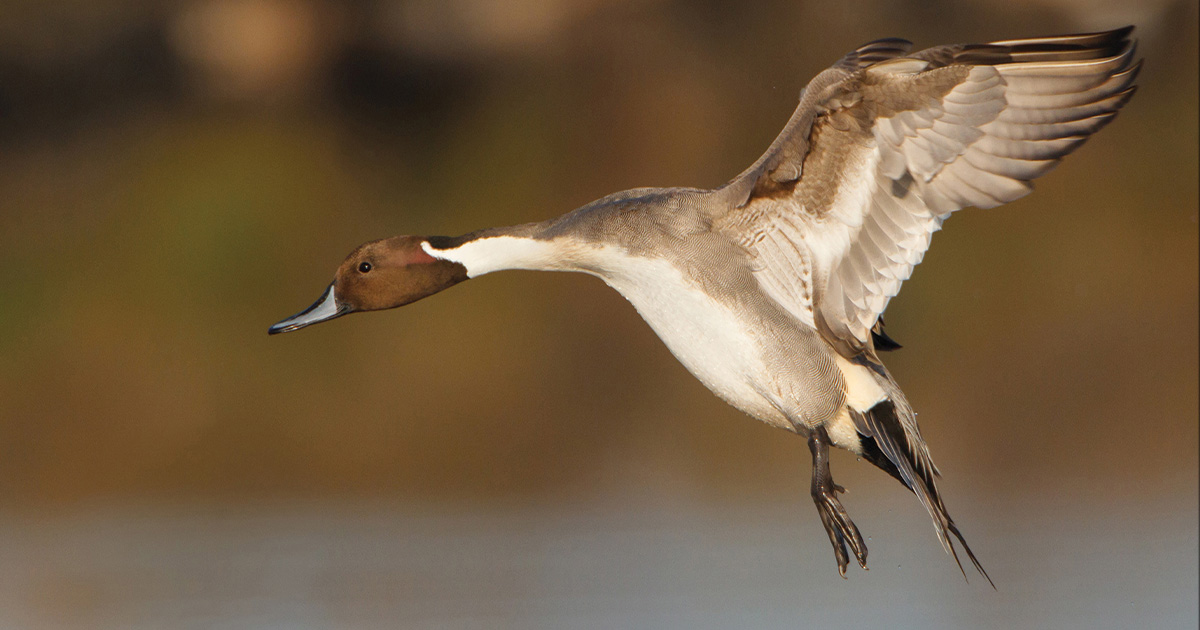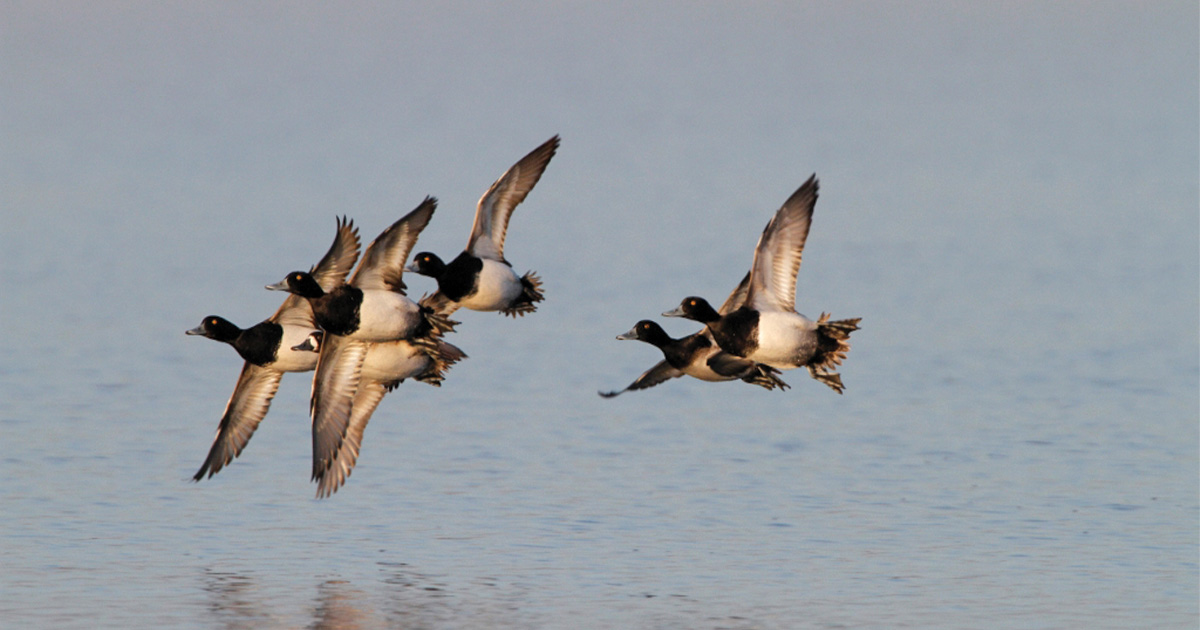Migration Alert: Strong Habitat, Waterfowl Numbers Across California has Hunters Optimistic
Oct. 18, 2023 – Pacific Flyway – California
Oct. 18, 2023 – Pacific Flyway – California

Talk about water whiplash! From years of persistent drought to an overabundance, that is the pleasant topic that captivates waterfowl hunters and fish and wildlife biologists this fall in California. Optimism is high thanks to an abundant water supply, the likes that duck hunters haven't seen in years.
Instead of a dry landscape and poor habitat along the 800-mile length of the Golden State, there is plenty of water. The notable exception is the high plateau Klamath Basin in the northeast, which remains extremely dry.
The limited northeast hunting season opened Oct. 7. Modoc National Wildlife Refuge (NWR) and Ash Creek Wildlife Area provided the best shooting for the public, without the need for a reservation following the opener.
“The Sacramento NWR Complex and its four units, Sacramento, Delevan, Colusa and Sutter, has received 100 percent of its Central Valley Project Improvement Act allocations,” reports Michael D’Errico, supervisory fish and wildlife biologist with the US Fish and Wildlife Service. “We’ve been able to maintain a higher level of semi-permanent marsh for breeding ducks and apply a number of irrigations to refuge lands to promote moist-soil vegetation. We’ve had a great year for food production.”
The landscape in the Sacramento Valley is full of rice. More than 500,000 acres, which after a harvest that is generally running three weeks late will be flooded to decompose stubble and provide food for millions of ducks and geese. In 2022, less than half that amount was planted, and fields were left fallow after harvest.
Hunters plying the Sacramento NWR Complex should expect to find 70 percent of refuge land flooded for opening day on Oct. 21. Typically, managers “stage flood” the remaining 30 percent of their ponds by late-November. So, anticipate reduced quotas for the opener that will expand to full quotas by early December.
D'Errico says that small groups of light geese arrived at the complex the first week of September, to complement a flock of about 200 light geese that chose to stay at the refuge all spring and summer. White-fronted geese began piling in the first week of October, as did dense flocks of northern pintails and an early push of wigeon.
How a dry Klamath Basin – hunting is not allowed this year at Lower Klamath NWR and limited to the dry field units at Tule Lake – affects the fall migration into the Sacramento Valley is up to conjecture. But, as D’Errico puts it, “Birds look for greener pastures, and if the habitat isn’t available, they are extremely mobile and move on to the next site.”
Bird use appears to be heavy in the Butte Basin and eastward to Gray Lodge Wildlife Area, which should open with full quotas. The buildup is much less impressive in the rice region known as District 10, near Marysville, but the delayed harvest is likely the culprit.
Smack in the middle of California sits the Sacramento−San Joaquin River Delta that flows west through the Suisun Marsh and out to sea through San Francisco Bay and under the Golden Gate Bridge. The Delta is privately-owned and composed of approximately 150 islands.
Tracts that have permanent lakes and riparian areas are loaded with mallards and wood ducks, a sure sign of good local production. White-fronted geese have been present since early September, with numbers building. Numbers of resident Canada geese seemed to have grown exponentially, thanks in part to a remnant flock released decades ago on Mandeville Island.
Known as the largest brackish tidal marsh on the entire West Coast, the Suisun Marsh is home to hundreds of private duck clubs, including the oldest in the state. The biggest challenge is the water quality, which has reduced duck food production in most areas.

Grizzly Island Wildlife Area will open with a full quota and will offer green-winged teal, wigeon, and shovelers. An improved hatch should increase the availability of mallards, especially early on.
Rimming the North Bay is the restored Napa River marshes and the massive restoration effort by Ducks Unlimited and partners at the Cullinan Ranch, with miles of ponds that stretch along Highway 37. The year-round habitat has been so successful that broods of canvasbacks, wigeon, gadwalls, and ruddy ducks, as well as Canada geese, have been observed all spring and summer.
Flocks of migratory northern pintails, shovelers, and wigeon are settling in to join birds that chose not to migrate. A free roam area, managed by the state, provides public hunting.
The mainstay of the San Joaquin Valley is the Grasslands Ecological Area of Merced County, the largest contiguous wetland and upland complex in the entire West. It contains about 150 private clubs and 16 state and federal public hunting areas. Is it any wonder that Merced is the top duck shooting county in the entire United States?
Right on cue, northern pintails arrived at the Volta Wildlife Area, where early water is provided and an early batch of “grey ghosts” showed up by the thousands at the end of July.
The Grasslands started taking water on Sept. 1, and the expanse of 300,000 acres is a sight to behold. Early mornings and evenings are highlights, with bands of northern pintails, green-winged teal, and shovelers taking to the air.
With a full supply of well-timed water, the outlook is bright.
“With the wet winter, our water situation is excellent,” explains Sean Allen, manager of the Los Banos wildlife complex. “The wet spring and relatively cool summer enhanced the habitat, and we got a lot of early water out to short stop the birds from continuing south to Tulare Basin, where there has been a botulism outbreak.”
Allen reports that the bird response appears to be good. “Anecdotally, we are seeing decent local production of mallards,” he adds. “A definite increase, for sure.”
The Grasslands had an inordinate number of birds in very early August, in particular, northern pintails, green-winged teal, and shovelers.
To the south, Mendota Wildlife Area – the state’s largest public hunting site – has excellent habitat and plenty of ducks. The only problem facing managers is moving available water to the ponds because of water hyacinth, which clogs canals and burns out pumps. Mendota generally produces a strong daily average bird harvest per hunter.
Tulare Basin, which floods only in exceptionally wet years, is now covered with water and recently suffered an outbreak of botulism. The most recent tally of dead birds recovered is about 2,000 ducks and 3,000 other kinds of water-dependent birds such as ibis, stilt, avocet and coots.
Kudos to the California Department of Fish and Wildlife for mobilizing airboats and directing employees and volunteers to pick up and remove dead and infected birds. In fact, the agency has set up an infirmary in the basin to care for sick birds in hopes some can be returned to the wild.
Kern NWR, located 19 miles from Delano, will open on time for the first time in memory, thanks to ample water. The 11,000-acre refuge generally yields some of the highest harvest averages for public shooters. Cinnamon teal, green-winged teal, and shovelers make up the bulk of the bag.
It will be interesting to see how the flooded Tulare Basin will affect both Mendota Wildlife Area and Kern NWR. The basin could serve as a massive closed zone with birds going both north and south to forage. Stay tuned.
In the San Jacinto Valley, Mystic Lake, which is normally dry, is chock full of water. Surrounding wetlands have plenty of early water, though evaporation during 97-degree October days poses some management issues.
“It’s going to be interesting with Mystic Lake full of water and holding rafting ducks,” says Joe Fass, a member of the Ramona Duck Club. “There will be plenty of birds in this desert region east of Los Angeles, but with a full lake, it might take some heavy wind to blow them off.”
Opening day should be very good. Cinnamon teal are already coming through on their way to Mexico. As Fass says, “That’s a real good indicator, and so is the adequate amount of water, which is highly unusual.”
Stay up to date with the latest migration information.